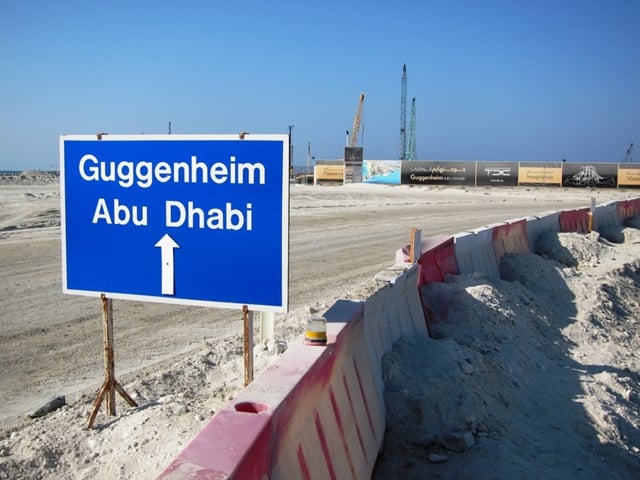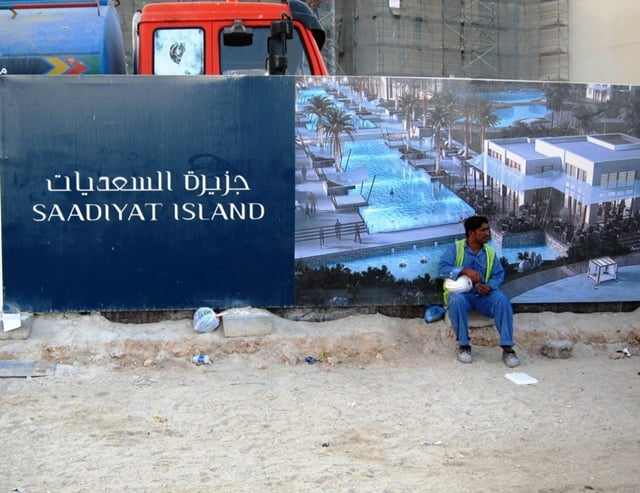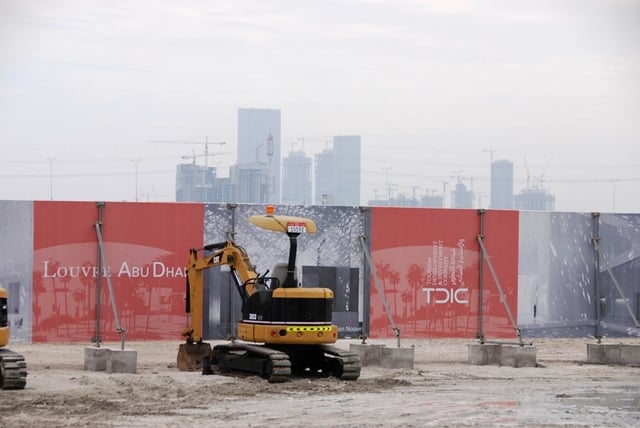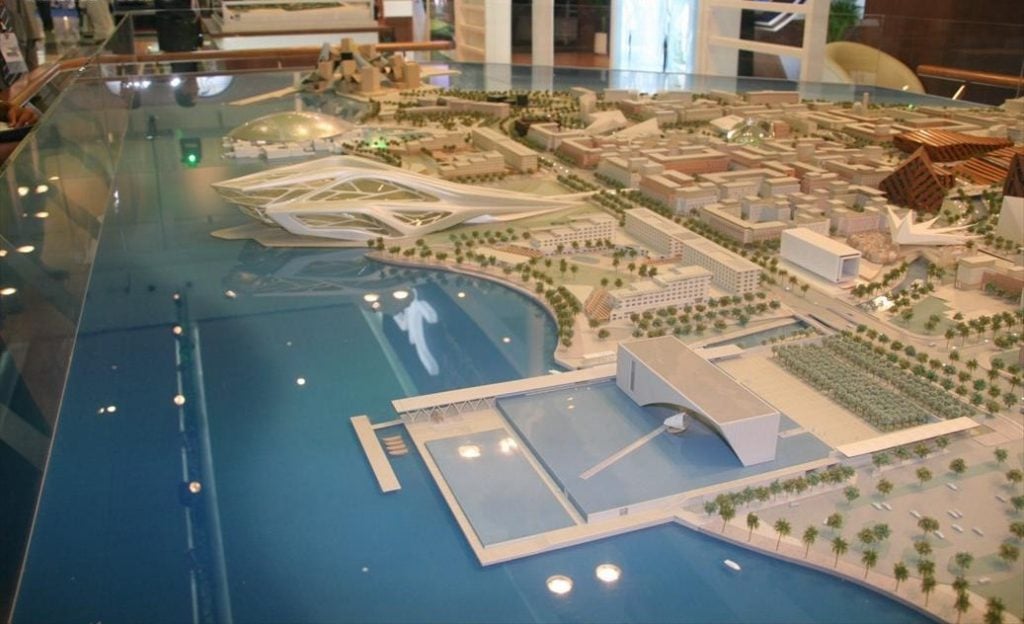Opinion
Artist Sneaks Into Future Guggenheim Abu Dhabi Site to Interview Workers
All is not well on Saadiyat Island.

Photo: Human Rights Watch.
All is not well on Saadiyat Island.

Ben Davis

Earlier this month, the artist Molly Crabapple—who has developed her own style of art-reportage for Vice, documenting her trips to places like Guantanamo Bay—dropped a major, 5,000-word essay, “Slaves of Happiness Island.” It documents firsthand her experience of visiting the construction site of Saadiyat Island in the United Arab Emirates, home to future mammoth franchises of both the Guggenheim and the Louvre museums, and the subject of ongoing controversy about the conditions of migrant workers employed at the site.
The new Guggenheim is not yet under construction, meaning no actual museum building construction work is currently being carried out, as the museum has made clear, but the museum has faced a call by a group of international artists known as Gulf Labor to boycott the new space unless labor conditions on the island can be improved. The museum has also been facing guerrilla protests which have disrupted shows at its New York site. Crabapple’s firsthand report isn’t likely to do anything to ease such concerns, putting, as it does, a vivid human face on the labor issue.

A worker on Saadiyat Island.
Photo: Human Rights Watch.
“I first set foot on Saadiyat on a day so hot it nearly made me faint,” Crabapple writes. “Journalists are not allowed to visit without government minders, so I sneaked in.” Most strikingly, Crabapple interviews “a worker building a tunnel that will lead into the Guggenheim.” The worker, she says, may be “the first Guggenheim worker to speak about the conditions working there.”
She explains that the worker, identified by the pseudonym “Vijay,” was paid $2,100 in recruitment fees in 2004, but that, after a decade of work, now makes $217 a month (rising to $326 with overtime, but down from $435 before the financial crisis).
Here is what Vijay says about life on the ground for those laying the groundwork for these cultural mega-projects: “Some days I start at 7 a.m. I never know when I will get done. We sometimes work past midnight. I sometimes sleep for only two or three hours…Yet we cannot complain.”

The site of the future Louvre Abu Dhabi.
Photo: Hans Haacke, via Gulf Labor.
Vijay works seven days a week. His company withholds salaries for months at a time, especially if workers visit home. He believes that his company is cheating workers on overtime, denying them access to the ledgers in which their hours are marked. He told Crabapple, “I don’t know how much longer I can go on like this. My body is on the verge of giving up, but I cannot leave my job because I am responsible for my sisters.”
The issues Crabapple documents—indentured servant-like conditions; bosses who confiscate passports and take away the rights of the largely South Asian immigrant workers; inhumane living conditions; and intense policing of workers’ freedom of expression and movement—are consistent with the details of a recent New York Times expose about the labor conditions that went into the only cultural facility so far completed on the Island, the Abu Dhabi campus of New York University. NYU insisted in advance that the campus construction would be governed according to a symbolic “Statement of Labor Values” that would guarantee an end to labor abuses. Based on dozens of interviews with workers, the Times concluded—after the construction was over—that, as it turned out, “conditions on the project were often starkly different from the ideal,” and that almost all of these values were violated.

Model of Saadiyat Island with Louvre Abu Dhabi and Guggenheim Abu Dhabi in the distance on the left. Photo by Imre Solt, Creative Commons Attribution-Share Alike 3.0 Unported license, GNU Free Documentation License.
In response to Crabapple’s inquiry about the testimony she had gathered from “Vijay” on Saadiyat Island, the Guggenheim issued a statement:
“The main construction contract has not yet been awarded for the Guggenheim Abu Dhabi. We are working closely with TDIC so that existing labor laws and high standards are enforced on all aspects of the project.”
In a strange postscript, the website ArtFCity released an email exchange between the Guggenheim press office and Crabapple. It shows that when the artist-reporter asked for comment on what she had gathered, a press representative replied, “We have received information that you are a member of Gulf Labor. Is this true? If so doesn’t it pose a conflict of interest?” Crabapple, a well-known left wing writer, replies that she is not a member of Gulf Labor (which she is not), and asks the source of the misinformation, to which the press person replies, “I would never reveal my sources.”
Having vetted the reporter, the museum then went on to provide the terse, two-sentence statement about labor values reproduced above.